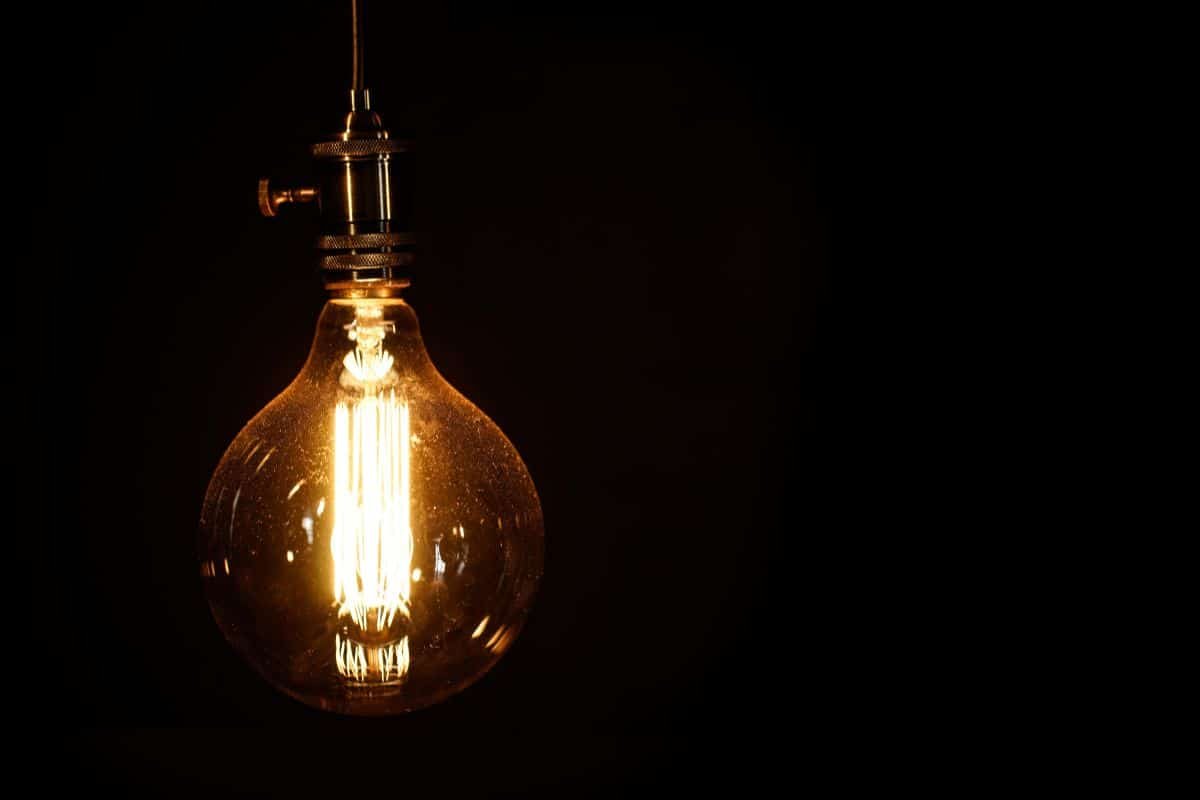Are old light bulbs a fire hazard? This a question every homeowner should consider. The simple answer is yes, particularly if they are not well-maintained. As light bulbs age, especially incandescent ones, they can overheat and become a serious fire risk. In this blog post, we will explore why old light bulbs pose this danger, how to tell when a bulb is too old, and what you can do to keep your home safe.
We will also guide you through the different types of bulbs and how to dispose of them properly, including recycling options and creative uses for old Christmas light bulbs.
Are Old Light Bulbs a Fire Hazard?
Light bulbs are an essential part of our daily lives, but we often overlook them until something goes wrong. One crucial question to consider is, Are old light bulbs a fire hazard? The answer is yes. If improper maintenance is done. Their components can wear out, leading to potential overheating. This is particularly true for incandescent bulbs, which are known for generating a lot of heat. An old light bulb that overheats can pose a serious risk. That’s why it’s essential to regularly check your bulbs and replace them before they become a hazard. But keep in mind that, if you’re in searching for better lighting solutions contact a lighting expert.
The Hidden Dangers of Old Light Bulbs
As light bulbs age, particularly incandescent ones, they can become a fire hazard. The filament inside an old light bulb is prone to wear and tear over time. When this happens, the bulb may start to draw more electricity than it can handle safely. This excess energy can lead to the bulb overheating and an overheated bulb can significantly increase the fire risk.
Why Are Incandescent Bulbs More Dangerous?
Incandescent bulbs are known for their warm, cozy light but they also tend to waste energy and get too hot. As these bulbs get older, the likelihood of them causing a fire increases. This risk is even higher if the bulb is continuously used or located near flammable materials like curtains, paper, or wood surfaces.
Are Other Types of Bulbs Safer?
While incandescent bulbs are the most likely to overheat, they are not the only type of bulb that can pose a risk. Halogen bulbs, for instance, operate at higher temperatures than incandescent ones. If they are old or used incorrectly, they can also become a fire hazard. On the other hand, LED bulbs are designed to run much cooler. It makes them a safer option overall. LEDs are the best choice for both safety and efficiency.
When Should You Replace an Old Light Bulb?
Knowing when to replace an old light bulb is crucial for maintaining a safe environment in your home. Here are some key indicators that it’s time to swap out that old light bulb:
- Frequent Flickering: If a bulb flickers frequently, it is a sign that the filament inside may be wearing out. This is a clear indicator that the bulb is reaching the end of its life and should be replaced promptly to avoid any risk of overheating.
- Dimming Light: A bulb that is no longer as bright as it once was may be too old. Dimming is often a sign that the bulb is struggling to function properly, which can lead to overheating and pose a fire hazard.
- Discoloration or Scorch Marks: Yellow or brown spots on the bulb or its base are signs of overheating. If you see this, the bulb may need to be replaced. This is a severe fire risk, and the bulb should be replaced immediately.
Different Types of Bulbs: A Guide to Understanding Your Lighting Options
When it comes to lighting your home or workspace, choosing the right type of bulb can make a big difference in both ambiance and energy efficiency. With so many different types of bulbs available, it is essential to understand the characteristics of each to make the best choice for your needs. This guide will explore the various types of light bulbs, their uses, and what sets them apart.
Incandescent Bulbs
Many of us grew up with traditional incandescent bulbs. These bulbs produce light by heating a filament inside the bulb until it glows. They give off a warm, welcoming light but use much energy. Incandescent bulbs also have a shorter lifespan than other types, which means they must be replaced more frequently.
Pros:
- Warm, pleasant light
- Inexpensive upfront cost
Cons:
- Short lifespan
- High energy consumption
Compact Fluorescent Lamps (CFLs)
Compared to incandescent bulbs, CFLs are a more energy-efficient alternative. They work by passing an electric current through a tube containing gas, which then produces ultraviolet light. This light excites a fluorescent coating on the inside of the tube, which produces visible light. CFLs use significantly less energy and last longer than incandescent bulbs.
Pros:
- Energy-efficient
- Longer lifespan
Cons:
- It contains small amounts of mercury, requiring careful disposal
- Longer warm-up time to reach full brightness
Light Emitting Diodes (LEDs)
LEDs are the most energy-efficient and durable type of light bulb available today. Unlike incandescent and CFL bulbs, LEDs don’t rely on heating a filament or gas to produce light. LEDs light up using a semiconductor when electricity passes through. They come in various colors and brightness levels.
Pros:
- Extremely energy-efficient
- Long lifespan
- Available in various colors and brightness levels
Cons:
- Higher upfront cost (though they save money in the long run)
Halogen Bulbs
Halogen bulbs are a type of incandescent bulb but they use a small amount of halogen gas to increase their efficiency and lifespan. They produce a bright, white light often used in spotlights, desk lamps, and vehicle headlights. Halogen bulbs are more energy-efficient than traditional incandescent bulbs but still fall short compared to CFLs and LEDs.
Pros:
- Bright, white light
- More energy-efficient than standard incandescent bulbs
Cons:
- Still less energy-efficient than CFLs and LEDs
- They run at high temperatures, which can be a safety concern
Fluorescent Tubes
Fluorescent tubes are commonly found in commercial and industrial settings, such as offices, schools, and warehouses. These long, tube-shaped bulbs are very energy-efficient and provide bright, even lighting over large areas. However, they can be cumbersome to install and require unique fixtures.
Pros:
- Very energy-efficient
- It provides bright, even lighting
Cons:
- Requires special fixtures
- Contains mercury, necessitating careful disposal
Specialty Bulbs
In addition to the standard types of bulbs, there are also specialty bulbs designed for specific purposes. For example, dimmable bulbs allow you to adjust the brightness of your lighting, while smart bulbs can be controlled remotely via smartphone apps or voice commands. There are also bulbs designed for specific uses, such as grow lights for plants or black lights for entertainment purposes.
Pros:
- Tailored to specific needs
- Often feature advanced technology
Cons:
- It can be more expensive than standard bulbs
- It may require additional equipment or apps to function properly
FAQs
How do I dispose of old light bulbs?
You can throw away old incandescent bulbs with regular trash. CFLs and fluorescent tubes should be taken to a recycling center because they contain mercury. LEDs should also be recycled to reduce waste.
How to recycle old light bulbs?
To recycle old bulbs, take CFLs and fluorescent tubes to a local recycling center or hardware store with collection bins. LEDs can go to electronic recycling centers. Some stores also have programs where you can drop off old bulbs.
What can I do with old Christmas light bulbs?
Old Christmas light bulbs can be turned into fun crafts. Paint them as ornaments, fill them with glitter, or use them in DIY wreaths or garlands. They can add a personal touch to your holiday decor.
Why is it important to recycle old light bulbs?
Recycling bulbs keeps harmful materials like mercury out of landfills. It helps to recover materials like glass and metal for reuse. It is a simple way to be more environmentally friendly.
Are there any creative uses for old light bulbs?
Yes! You can turn old bulbs into planters, oil lamps, or small vases. Old bulbs can become unique home decor items with some creativity.
Conclusion
So, are old light bulbs a fire hazard? Yes, they can be, especially if not properly cared for. Old light bulbs, particularly incandescent ones, can overheat as they age and become dangerous. Watch for signs like flickering, dimming, or discoloration to know when it’s time to replace them. Switching to safer options like LED bulbs can help reduce the risk. Also, remember to recycle or creatively reuse your old bulbs to protect the environment. By being careful with your lighting, you can keep your home safe and bright.

